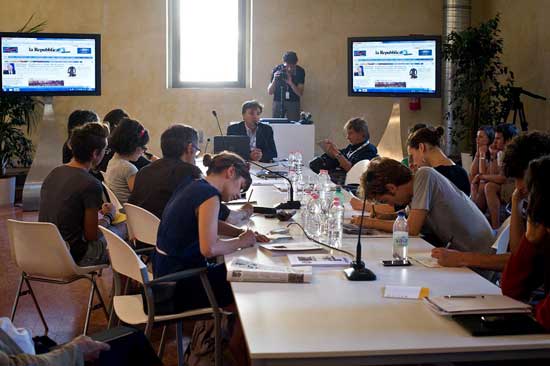G. Smorto: «Digital newspapers force journalists to work in real time with multimedia materials and never-ending sources»

|
|
||
|
Journalist Giuseppe Smorto leads the website of Italian newspaper La Repubblica, one of the most read in the country and a referent in Europe from 2003, and he has worked on this enterprise for more than three decades. Therefore, Smorto is a privileged witness of the transition from paper to the digital environment. Repubblica.it was the first news website in Italy and Smorto underlines that they have 2.3 million fans in Facebook and 1.8 million followers on Twitter. We talk about the challenges of the digital press and the future of environmental journalism in the web-2.0 and web-3.0 paradigm. The environmental section of La Repubblica in the digital edition of La Repubblica is one of the best in Europe. Why did you bet on this model? In your paper edition, are ecology and sustainability as relevant as in the digital edition? How did the Internet change your gatekeeping of environmental news? You said in a previous interview that online immediacy is a risk for quality press. What do you recommend to maintain the right level for your contents? |
«The digital edition has more space, more ways to edit, write and tell stories»
«When something happens, the paper works to understand why it happened» |
|
 Mètode |
«I want my journalists to always be connected to social networks in order to understand what’s going on out there, what the main issues are» |
|
|
Continuing with this idea, from your perspective, could blogs replace journalistic work from the newsroom? Regarding social networks like Twitter, what do you demand of the journalists in your newsroom? For you, what is the main role of environmental journalists? The development of environmental journalism has been historically limited due to economic interests. In fact, advertising lobbies are not very eco-friendly. Do you frequently have news sponsored by energy or oil companies? The Guardian is leading the big campaign «Keep it in the ground» to fight against climate change. Have you promoted any environmental action in Italy from the newspaper? In your opinion, what is the future of environmental journalism in the digital paradigm? Maria Josep Picó. Journalist. Chair for Scientific Dissemination of the University of Valencia. |
«Journalists should give readers the instruments to understand the news without “translating” it for them» |
|







